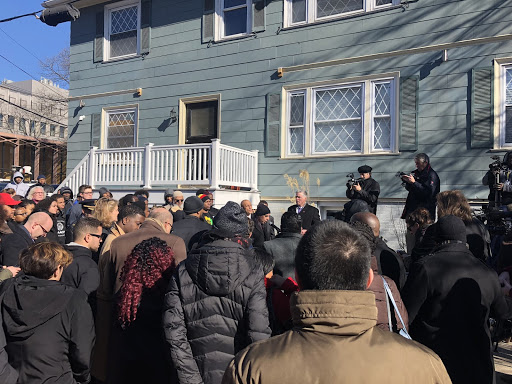On February 5, Providence community advocates, leaders, and residents gathered to encourage unity and condemn bigotry in response to racist flyers that were disseminated near Brown University’s campus. The college’s president, Christina Paxson, reacted to the flyers with a letter over two weeks later, decrying racism while also acknowledging the tardiness of the response. This exhibition of bigotry is just one example of the racism that permeates college campuses across the country, adding to the discussion surrounding the role institutions play in responding to such attacks.
This incident featured anonymous tri-fold pamphlets that were put on the doors of homes in the Providence area and on the Brown campus. The cover read “NEGRO CRIME” in large letters with “in Mayor Jorge O. Elorza’s Sanctuary City of PROVIDENCE, RI” underneath. According to Rhode Island Public Radio, “Sanctuary City” is “a term used by critics to refer to cities that have resisted cooperation with federal immigration authorities.” Below these headers was a photo of James Vincent, the President of Providence NAACP with criminal accusations against him below. The pamphlet alleged that he was responsible for “defrauding the Providence NAACP branch of its membership fees, failing to address the negro crime problem” and “extort[ing] money from white people.”
Following the incident, students at Brown University reached out to local NAACP officials and worked to organize the event. Nearly 100 people congregated in the middle of Brook Street between George and Charlesfield to stand together and demonstrate their intolerance of hatred. The 20-minute event featured half a dozen speakers, including President of Providence City Council David Salvatore, Councilwoman Nirva LaFortune, Councilman Seth Yearden, and Mayor Jorge Elorza. Mayor Elorza explained that the flyers were initially regarded as a personal attack against James Vincent, but upon further examination understood to be a racist act that threatened the “values we hold dear and the principles by which we live our lives in Providence.” He explained that this attack transpired “from a certain ideology, an ideology that frankly is on the rise across the country, and we’re seeing in our city as well.” Elorza refused to dignify the sentiment of the flyers by sharing their contents, and instead emphasized the importance of unity and acceptance, especially at times when these values are at risk. All of the event’s speakers noted the sadness they felt from the expression of racism, but also the inspiration and hope brought from the outpouring of support they have received following the incident. The event aimed to demonstrate unity, clearly stating the Providence community’s intolerance of intolerance.
This type of expression of racism on a college campus, however, is not a rare occurrence. The posters distributed around Brown’s campus reflect the bigotry that plagues this nation and frequently manifests on college campuses. The “certain ideology” Elorza referenced affects institutions across the country and manifests in countless ways—from bigoted posters to acts of physical violence to systemic and muted racism. In October 2017, the Anti-Defamation League Center on Extremism had reported 188 events involving white supremacy at 126 colleges in the previous 13 months. According to the Southern Poverty Law Center, 330 bias-related events occurred on college campuses in a five-month period. These statistics do not account for unreported incidents or those affected by systemic racism.
In January, racist signs were posted at the University of South Carolina’s African American Studies department. They were placed on top of a department display, partially covering photographs of historically significant African Americans and used derogatory terms to reference and attack Black people. Harris Pastides, the University of South Carolina’s president, sent a letter that strongly condemned the racist incident, asserting that “bigotry and racism have no place in our community.” In conjunction, a community dialogue was held the following day to speak out against racism and promote unity as a community ideal. A group of Black students responded to this attack with a poster counter-campaign that featured their photos with the words “I am not” followed by a phrase that responds to racist remarks.
In addition to anonymous displays of bigotry, racist ideologies on college campuses also often lead to violence. Last September, a student at Cornell University was attacked in a racially charged incident that left him in need of emergency medical assistance. The victim was confronted by a group of five white men outside his home who harassed him with expletives and racial slurs—he was later physically assaulted by repeated blows to the face. Following this event, Cornell’s president, Martha Pollack, vowed to take steps to create a more accepting community.
All of these events serve as indicators of racism’s rampant permeation through American college campuses. As places dedicated to fostering thought and development, colleges have a unique opportunity and responsibility to rehabilitate corrupted ideologies. Administrators and students alike must strongly condemn displays of discriminatory beliefs to spark a discourse about equality and acceptance—much like community members did last month in Providence. The global prominence and relevance of colleges give students and educators a platform to fight injustice, restore ideals, and promote equality—both on and far beyond campuses. Denouncements of racism can act as a jumping-off point for discussions about race and belonging that can transcend colleges. As all of the speakers at the event on Brook and George Street asserted and all colleges should make clear, intolerance is not, and will not be, tolerated.
